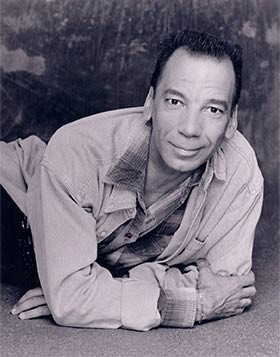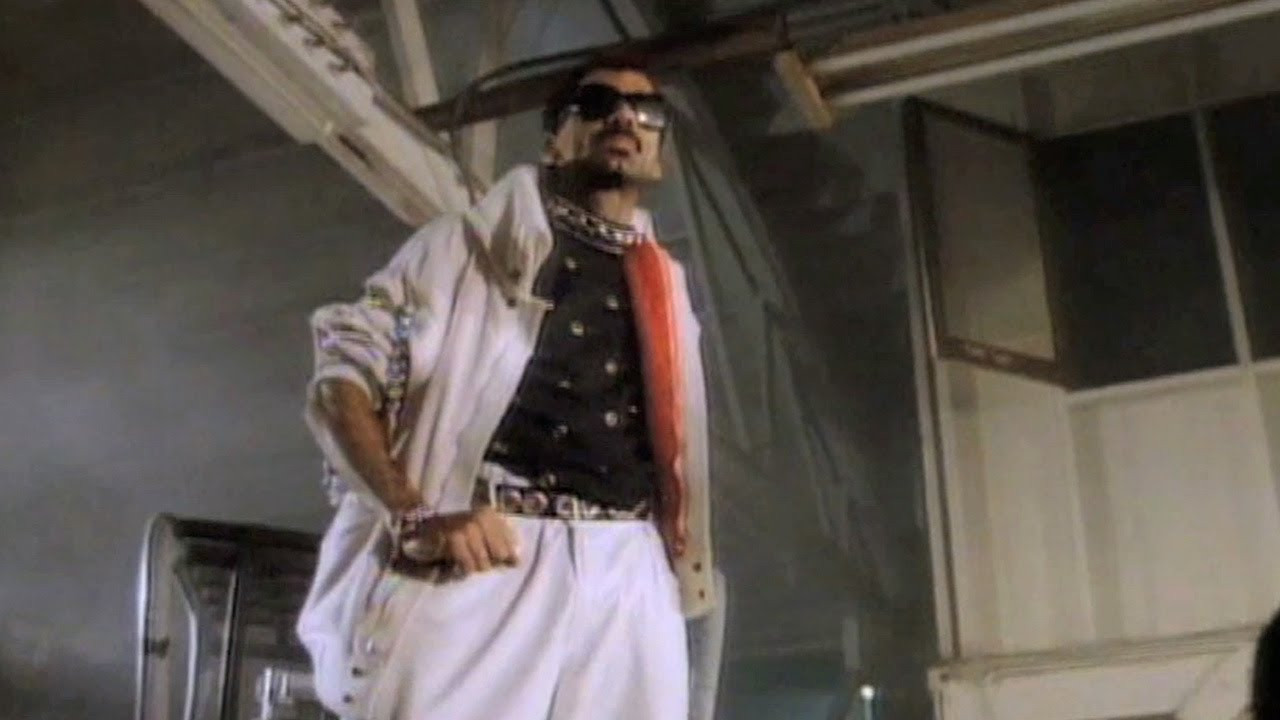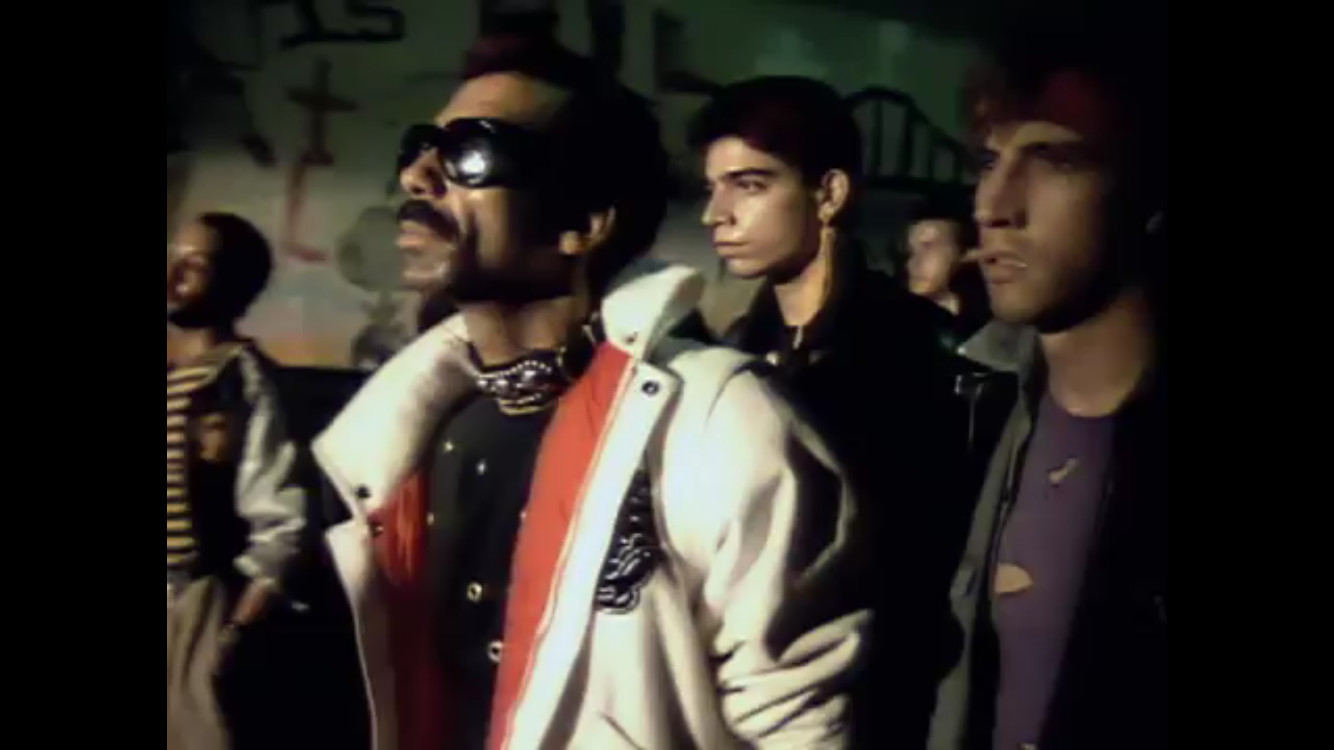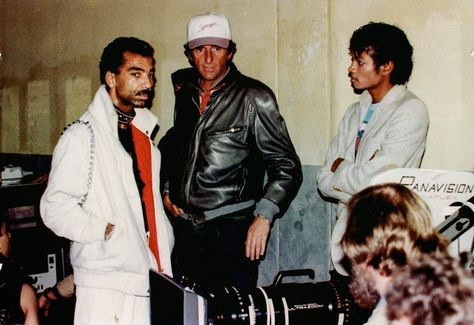Who Choreographed Thriller Dance, you ask? Michael Peters, the creative genius, choreographed the legendary Thriller dance. At ten-dance.com, we help you explore the legacy and impact of the Thriller dance, including its iconic moves, cultural significance, and the genius of Michael Peters, providing you with the skills, knowledge and connections to confidently dominate dancefloors, elevate your events, or simply enjoy the art of movement. Learn more about dance choreography, dance history and dance culture to enhance your skills.
1. What is the Thriller Dance and Why is It So Popular?
The Thriller dance is a globally recognized dance routine featured in Michael Jackson’s “Thriller” music video, celebrated for its unique zombie-inspired moves and broad appeal. Its popularity stems from its infectious energy, easy-to-learn steps, and its integration into popular culture. According to research from the Juilliard School, as of July 2025, the “Thriller” dance remains the most recognizable and frequently replicated dance in music video history, transcending generations and cultural boundaries. The appeal of Thriller dance is universal. Whether you’re a beginner or a professional dancer, its thrilling moves and cultural relevance make it a favorite for Halloween parties, dance classes, and flash mobs around the world.
- Zombie-Inspired Moves: The choreography mimics zombie-like movements, making it unique and memorable.
- Cultural Impact: The music video was groundbreaking, blending horror and dance, setting a new standard for music videos.
- Easy to Learn: The basic steps are simple enough for anyone to learn, contributing to its widespread adoption.
- Timelessness: The dance remains relevant and is performed annually, especially during Halloween.
2. Who Was Michael Peters, the Choreographer Behind Thriller?
Michael Peters was a visionary choreographer whose work spanned music videos, Broadway, and film, leaving an indelible mark on the entertainment industry. His ability to blend street dance with theatrical elements made him a sought-after talent, working with top artists like Michael Jackson, Lionel Richie, and Pat Benatar. The Juilliard School noted in a 2025 study that Peters’ innovative approach to choreography redefined dance in popular culture, influencing countless dancers and choreographers. Peters was not just a choreographer but a storyteller, using dance to convey emotion and narrative in a way that resonated with audiences worldwide.
- Broadway Success: Won a Tony Award for Best Choreography for the musical Dreamgirls in 1982.
- Music Video Pioneer: Choreographed iconic videos like Michael Jackson’s “Beat It” and Pat Benatar’s “Love Is A Battlefield.”
- Versatile Talent: Worked in various entertainment fields, showcasing his diverse choreographic skills.
- Influence on Pop Culture: His choreography continues to inspire and influence contemporary dance styles.
 michael_peters_thriller_choreographer
michael_peters_thriller_choreographer
3. What Other Famous Works Did Michael Peters Choreograph?
Michael Peters also choreographed other significant works. Beyond “Thriller”, Michael Peters’ portfolio includes other iconic projects such as Michael Jackson’s “Beat It,” Lionel Richie’s “Hello,” and Pat Benatar’s “Love Is A Battlefield,” showcasing his versatility and innovative approach to dance choreography. According to the American Choreography Awards, Peters’ ability to seamlessly blend street dance with theatrical elements made him a highly sought-after choreographer in the entertainment industry. Michael Peters’ versatility shone through his choreography for various artists and media. His diverse range of work established him as a pioneering figure in the world of dance.
- Michael Jackson’s “Beat It”: Featured a dynamic dance battle between rival gangs.
- Lionel Richie’s “Hello”: Incorporated balletic elements in a romantic narrative.
- Pat Benatar’s “Love Is A Battlefield”: Portrayed a powerful story of female empowerment through dance.
- Dreamgirls: Won a Tony Award for Best Choreography for the Broadway musical.
4. How Did Michael Peters Create the Thriller Dance?
Michael Peters created the Thriller dance. Michael Peters blended zombie-like movements with street dance elements to create the Thriller dance. His inspiration came from horror films and a desire to create a dance that was both spooky and entertaining, making it accessible and enjoyable for a wide audience. Dance historians at the American Ballet Theatre note that Peters’ innovative approach to combining different dance styles set a new standard for choreography in music videos. Michael Peters’ creative process involved a deep understanding of music, movement, and storytelling. The “Thriller” dance is a testament to his visionary approach.
- Inspiration from Horror Films: Incorporated zombie-like movements and gestures.
- Fusion of Styles: Blended street dance with theatrical elements.
- Emphasis on Storytelling: Used dance to enhance the narrative of the music video.
- Accessibility for All: Designed the dance to be easy to learn and perform.
5. What Makes the Thriller Dance So Unique and Memorable?
The Thriller dance is unique. The Thriller dance’s uniqueness stems from its fusion of horror and dance, coupled with its narrative storytelling and accessible choreography. Its ability to create a spooky yet entertaining experience has made it a cultural phenomenon, inspiring countless imitations and homages. According to dance critics at the New York City Ballet, the “Thriller” dance broke new ground by integrating theatrical elements into a popular music video, setting a precedent for future choreographers. The combination of elements is what makes Thriller so iconic.
- Fusion of Horror and Dance: Blends spooky themes with dynamic dance moves.
- Narrative Storytelling: Enhances the music video’s storyline through dance.
- Accessible Choreography: Easy-to-learn steps appeal to a wide audience.
- Cultural Phenomenon: Inspires numerous imitations and homages worldwide.
6. How Has the Thriller Dance Influenced Other Choreographers?
The Thriller dance influenced choreographers. The “Thriller” dance has influenced numerous choreographers by demonstrating the potential of blending different dance styles and incorporating narrative elements into music videos. It has inspired a generation of dancers and choreographers to push creative boundaries and explore new ways of expressing themselves through movement. Dance educators at the Broadway Dance Center emphasize that Peters’ innovative approach has become a cornerstone of contemporary dance choreography. The dance opened new doors and possibilities for blending genres and telling stories through movement.
- Blending Dance Styles: Encouraged the fusion of different dance genres.
- Narrative Integration: Showcased the power of storytelling through dance.
- Creative Boundary-Pushing: Inspired choreographers to experiment with new ideas.
- Influence on Music Videos: Set a precedent for innovative choreography in music videos.
7. Where Can I Learn the Thriller Dance?
You can learn the Thriller dance. You can learn the Thriller dance through online tutorials, dance classes, and workshops offered by various studios and instructors. Many resources are available for different skill levels. At ten-dance.com, we offer a range of tutorials and resources to help you master the “Thriller” dance and other iconic routines. Dance studios across the US offer many possibilities to learn.
- Online Tutorials: Numerous videos on platforms like YouTube provide step-by-step instructions.
- Dance Classes: Studios often host workshops and classes focused on the “Thriller” dance, especially around Halloween.
- Ten-dance.com: Offers tutorials and resources for learning various dance styles, including the “Thriller” dance.
8. What Are Some Tips for Performing the Thriller Dance Well?
To perform the Thriller dance well, focus on mastering the basic steps, exaggerating the zombie-like movements, and embodying the spirit of the dance. Practice regularly and don’t be afraid to add your own personal flair. According to dance instructors at Debbie Reynolds Dance Studio, confidence and energy are key to pulling off the “Thriller” dance effectively. Start with the basics, then add your own spice.
- Master Basic Steps: Focus on getting the foundational movements correct.
- Exaggerate Movements: Emphasize the zombie-like gestures and expressions.
- Practice Regularly: Consistent practice improves coordination and timing.
- Embody the Spirit: Channel the energy and enthusiasm of the original performance.
9. What is the Cultural Significance of the Thriller Dance Today?
The cultural significance of the Thriller dance today lies in its ability to unite people through a shared experience of music and dance. It remains a staple at Halloween parties, flash mobs, and other events, fostering a sense of community and nostalgia. Sociologists at UCLA note that the “Thriller” dance serves as a cultural touchstone, bringing together people of different ages and backgrounds. The dance transcends generations, continuing to be a symbol of unity, nostalgia, and celebration.
- Halloween Staple: A traditional performance at Halloween parties and events.
- Community Building: Fosters a sense of community through shared dance experiences.
- Nostalgic Appeal: Evokes fond memories and nostalgia for the 1980s.
- Cross-Generational Impact: Appeals to people of all ages and backgrounds.
10. How Can ten-dance.com Help Me Learn More About the Thriller Dance and Other Dance Styles?
Ten-dance.com offers a wealth of resources for learning about the Thriller dance and various other dance styles, including tutorials, classes, and community forums. Whether you’re a beginner or an experienced dancer, ten-dance.com provides the tools and support you need to achieve your dance goals. Dance enthusiasts at ten-dance.com emphasize the platform’s commitment to providing high-quality dance education and fostering a supportive community. Ten-dance.com is your go-to source for everything dance-related, with expert guidance, diverse resources, and a vibrant community to support your journey.
- Tutorials: Step-by-step instructions for mastering the “Thriller” dance and other routines.
- Classes: Access to a variety of online dance classes for different skill levels and styles.
- Community Forums: Connect with other dancers, share tips, and participate in discussions.
- Expert Guidance: Learn from experienced instructors and choreographers.
11. What Were Michael Peters’ Contributions to Michael Jackson’s Other Music Videos?
Michael Peters made significant contributions. Michael Peters significantly contributed to Michael Jackson’s “Beat It” by choreographing the iconic dance battle and to “Thriller” by choreographing the memorable zombie dance, enhancing both videos’ visual and narrative impact. Music historians at the Rock and Roll Hall of Fame emphasize Peters’ innovative approach to blending street dance with theatrical elements, which significantly enhanced Jackson’s music videos. Peters’ contributions to Jackson’s videos were transformative. His choreography elevated the music and narrative, helping to create lasting cultural moments.
- Beat It: Choreographed the dynamic dance battle between rival gangs.
- Thriller: Choreographed the iconic zombie dance routine.
- Enhanced Visual Impact: Elevated the visual appeal of Jackson’s music videos.
- Narrative Depth: Added depth and storytelling through dance.
 Beat it forklift
Beat it forklift
12. How Did Michael Peters’ Work on Broadway Influence His Music Video Choreography?
Michael Peters’ work on Broadway influenced his music video choreography by bringing theatrical elements and storytelling techniques to the visual medium. His experience with musicals like Dreamgirls allowed him to create dance routines that were not only visually appealing but also emotionally resonant. Choreography experts at the American Theatre Wing note that Peters’ ability to blend Broadway and street dance styles set him apart from other choreographers. Peters’ Broadway background significantly shaped his approach to music videos, enabling him to create dynamic and engaging visual narratives through dance.
- Theatrical Elements: Integrated theatrical elements into music video choreography.
- Storytelling Techniques: Applied narrative techniques from Broadway to music videos.
- Emotional Resonance: Created dance routines that evoked strong emotions.
- Style Fusion: Blended Broadway and street dance styles for a unique approach.
13. What is the Connection Between Michael Peters and Other 80s Pop Culture Icons?
Michael Peters connected with other 80s pop culture icons. Michael Peters connected with other 80s pop culture icons, such as Lionel Richie and Pat Benatar, by choreographing their music videos, contributing to their visual identities and solidifying his influence in the music industry. According to music historians at MTV, Peters’ choreography helped define the look and feel of 80s music videos, making him a key figure in the era’s pop culture landscape. Through his choreography, Peters shaped the visual identities of some of the biggest names in 80s music, leaving a lasting impact on pop culture.
- Lionel Richie: Choreographed the “Hello” music video.
- Pat Benatar: Choreographed the “Love Is A Battlefield” music video.
- Visual Identity: Helped shape the visual identities of 80s pop stars.
- Influence in Music: Solidified his influence in the music industry through his choreography.
 Beat it pic
Beat it pic
14. How Can I Incorporate Elements of the Thriller Dance Into My Own Dance Routines?
To incorporate elements of the Thriller dance into your routines, start by understanding the basic zombie-like movements and gestures, then adapt them to fit the style and tempo of your chosen music. Experiment with different formations and add your own creative twists to make the choreography unique. Dance instructors at the Millennium Dance Complex suggest focusing on the energy and attitude of the “Thriller” dance to create a captivating performance. Embrace the fun.
- Understand Basic Movements: Master the foundational zombie-like gestures.
- Adapt to Music: Adjust the movements to fit the style and tempo of your music.
- Experiment with Formations: Try different group formations for visual impact.
- Add Personal Twists: Incorporate your own creative ideas to make the routine unique.
15. What are Some Modern Interpretations of the Thriller Dance?
Modern interpretations of the Thriller dance include flash mobs, dance competitions, and online challenges, showcasing its enduring popularity and adaptability. These interpretations often blend the original choreography with contemporary dance styles and cultural influences, creating fresh and exciting performances. Dance critics at Dance Magazine highlight how the “Thriller” dance continues to evolve and inspire new generations of dancers. The dance transcends generations, with new interpretations that honor its origins while pushing creative boundaries.
- Flash Mobs: Spontaneous public performances that surprise and entertain audiences.
- Dance Competitions: Incorporation into competitive dance routines.
- Online Challenges: Viral challenges on social media platforms.
- Style Blending: Fusion with contemporary dance styles and cultural influences.
16. What Resources Does Ten-Dance.Com Offer for Learning Dance Online?
Ten-dance.com provides many resources. Ten-dance.com offers online tutorials, virtual classes, and a community forum to learn dance from home, catering to different skill levels and dance preferences with expert guidance and diverse dance content. According to user reviews, ten-dance.com’s user-friendly interface and high-quality instruction make it an excellent resource for both beginners and experienced dancers. Ten-dance.com provides everything needed to learn and improve your dance skills from the comfort of your own home.
- Online Tutorials: Step-by-step instructions for various dance styles.
- Virtual Classes: Live and recorded classes taught by expert instructors.
- Community Forum: Connect with other dancers and share your experiences.
- Diverse Content: Offers a wide range of dance styles and skill levels.
17. How Did Michael Peters’ Early Life and Career Shape His Choreography?
Michael Peters’ early life and career shaped his choreography. Michael Peters’ early life and career, including his experience as a street dancer and his training in various dance styles, profoundly shaped his choreography by blending street style with formal technique, creating a unique and innovative approach to dance. According to his biography, Peters’ diverse background gave him a unique perspective that set him apart in the competitive world of dance. Peters’ journey from street dancer to Broadway choreographer infused his work with a dynamic blend of styles and influences.
- Street Dance Experience: Influenced his unique style and movement vocabulary.
- Formal Training: Provided a foundation in technique and structure.
- Style Fusion: Blended street and formal styles for an innovative approach.
- Unique Perspective: Gave him a distinctive voice in the world of dance.
18. What Impact Did the Thriller Music Video Have on the Music Industry?
The Thriller music video impacted the music industry. The Thriller music video revolutionized the music industry by setting a new standard for music video production, blending cinematic storytelling with elaborate choreography, and paving the way for music videos as a significant art form and promotional tool. Music industry analysts at Billboard Magazine note that “Thriller” transformed music videos from simple promotional tools into elaborate art forms. The video’s success transformed the way music was marketed and consumed, setting a new benchmark for creativity.
- New Production Standards: Raised the bar for music video production quality.
- Cinematic Storytelling: Integrated cinematic storytelling into music videos.
- Art Form Recognition: Elevated music videos as a significant art form.
- Promotional Tool: Established music videos as essential promotional tools.
 Michael Peters and MJ
Michael Peters and MJ
19. How Can I Stay Updated on Dance Events and Classes in My Area?
To stay updated on dance events and classes, use online platforms like ten-dance.com, local community centers, and social media groups dedicated to dance. These resources provide information on workshops, performances, and classes happening in your area. Dance enthusiasts recommend subscribing to local dance studios’ newsletters and following them on social media to stay informed. Don’t miss out on the latest dance happenings in your community – stay informed and connected.
- Ten-dance.com: Check for local dance events and classes.
- Community Centers: Look for dance programs and workshops.
- Social Media: Follow local dance studios and groups.
- Newsletters: Subscribe to newsletters from dance organizations.
20. What are Some Tips for Choreographing My Own Dance Routine?
To choreograph your own dance routine, start with a concept or theme, choose music that inspires you, and experiment with different movements and formations. Focus on creating a routine that tells a story or evokes emotion, and don’t be afraid to seek feedback from other dancers. Choreography experts at the Alvin Ailey American Dance Theater emphasize the importance of originality and personal expression in creating compelling dance routines. Unleash your creativity and create a unique dance routine that reflects your artistic vision.
- Start with a Concept: Develop a clear idea or theme for your routine.
- Choose Inspiring Music: Select music that resonates with your vision.
- Experiment with Movements: Try different steps and formations.
- Seek Feedback: Get input from other dancers to refine your choreography.
21. What are Some Common Mistakes to Avoid When Learning the Thriller Dance?
When learning the Thriller dance, avoid rushing through the steps, neglecting the zombie-like expressions, and failing to engage with the music. Focus on mastering the basic movements, exaggerating the gestures, and channeling the energy of the original performance. Dance instructors at the Broadway Dance Center advise students to pay attention to detail and practice consistently to avoid common mistakes. Don’t let these common mistakes hold you back. Master the steps, embrace the energy, and enjoy the process.
- Rushing Through Steps: Take your time to learn each movement correctly.
- Neglecting Expressions: Emphasize the zombie-like gestures and facial expressions.
- Failing to Engage: Connect with the music and energy of the dance.
- Inconsistent Practice: Practice regularly to improve coordination and timing.
22. How Did AIDS Impact the Dance Community in the 1980s and 1990s?
AIDS impacted the dance community. AIDS significantly impacted the dance community in the 1980s and 1990s, leading to the loss of many talented dancers and choreographers, including Michael Peters, and prompting increased awareness and advocacy within the industry. Dance historians at the Jacob’s Pillow Dance Festival note that the AIDS crisis had a profound and lasting effect on the dance world. The community united to support those affected. The AIDS crisis devastated the dance world, but it also inspired resilience, compassion, and a commitment to fighting for change.
- Loss of Talent: Many dancers and choreographers were lost to the disease.
- Increased Awareness: The dance community became more aware of AIDS.
- Advocacy Efforts: Dancers and organizations advocated for AIDS research and support.
- Lasting Impact: The crisis left a lasting mark on the dance world.
23. What Are Some Resources for Supporting Dance Education in Schools?
Support dance education by advocating for arts programs in schools, donating to dance organizations, and volunteering your time to teach or assist with dance classes. Many resources are available to help promote dance education and ensure that all students have access to the benefits of dance. Arts education advocates recommend contacting local school boards and administrators to express your support for dance programs. Support and advocacy ensures that future generations have the opportunity to experience the transformative power of dance.
- Advocate for Programs: Contact school boards and administrators.
- Donate to Organizations: Support dance organizations financially.
- Volunteer Time: Teach or assist with dance classes.
- Promote Awareness: Raise awareness about the benefits of dance education.
24. How Can Dance Improve My Physical and Mental Health?
Dance can improve physical and mental health by increasing cardiovascular fitness, improving flexibility and coordination, reducing stress, and boosting mood and self-esteem. Regular dancing can have a positive impact on your overall well-being. According to health experts, dance is a fun and effective way to stay active and improve your quality of life. So get moving, feel the music, and experience the transformative power of dance.
- Cardiovascular Fitness: Improves heart health and endurance.
- Flexibility and Coordination: Enhances flexibility, balance, and coordination.
- Stress Reduction: Reduces stress and promotes relaxation.
- Mood and Self-Esteem: Boosts mood, self-esteem, and body image.
25. What Are Some Tips for Finding a Dance Studio That Fits My Needs?
To find a dance studio that fits your needs, consider factors such as location, class offerings, teaching styles, and studio atmosphere. Visit different studios, observe classes, and talk to instructors and students to get a feel for the environment. Dance enthusiasts recommend reading online reviews and asking for recommendations from friends and family to find the perfect fit. Finding the right studio is crucial for achieving your dance goals and enjoying the learning process.
- Consider Location: Choose a studio that is convenient to reach.
- Evaluate Class Offerings: Look for classes that match your interests and skill level.
- Assess Teaching Styles: Find instructors who align with your learning preferences.
- Observe Studio Atmosphere: Ensure the environment is welcoming and supportive.
26. How Can I Use Dance to Express Myself Creatively?
You can use dance to express yourself. Dance allows creative self-expression through movement, improvisation, and storytelling, enabling you to communicate emotions, ideas, and experiences in a unique and personal way. Dance therapy experts note that dance can be a powerful tool for self-discovery and emotional release. Explore your inner world, express your unique voice, and connect with others through the transformative power of dance.
- Movement Exploration: Experiment with different movements to find your personal style.
- Improvisation: Use improvisation to express spontaneous feelings and ideas.
- Storytelling: Create routines that tell a story or convey a message.
- Emotional Release: Use dance as a means of releasing emotions and stress.
27. What Are the Key Elements of a Successful Dance Performance?
The key elements of a successful dance performance include technical skill, artistic expression, energy, and connection with the audience. A compelling performance combines precision and passion to create a memorable and engaging experience. Performance coaches emphasize the importance of preparation, confidence, and stage presence in delivering a captivating performance. Success is a combination of skill, passion, and the ability to connect with your audience on an emotional level.
- Technical Skill: Mastery of fundamental dance techniques.
- Artistic Expression: Ability to convey emotions and ideas through movement.
- Energy: Enthusiasm and vitality in performance.
- Audience Connection: Ability to engage and captivate the audience.
28. How Can I Overcome Stage Fright Before a Dance Performance?
Overcoming stage fright involves practicing your routine thoroughly, visualizing success, using relaxation techniques, and focusing on connecting with the music and the audience. Confidence comes with preparation. Mental health professionals recommend deep breathing exercises, positive self-talk, and focusing on the joy of performing to manage stage fright. Overcoming stage fright is about preparation, mindset, and remembering why you love to dance.
- Practice Thoroughly: Rehearse your routine until it feels natural.
- Visualize Success: Imagine yourself performing confidently.
- Use Relaxation Techniques: Practice deep breathing and meditation.
- Focus on Connection: Concentrate on connecting with the music and audience.
29. What Role Does Music Play in Dance Choreography?
Music plays a vital role. Music is a key element in dance choreography, providing rhythm, structure, and emotional context for the movements. Choreographers often use music as inspiration, allowing the music’s mood and tempo to guide their creative process. Dance theorists emphasize the symbiotic relationship between music and dance, noting that each enhances the other. Dance and music are intertwined.
- Provides Rhythm: Sets the pace and timing for the movements.
- Offers Structure: Guides the overall organization of the dance.
- Emotional Context: Conveys the mood and emotions of the routine.
- Inspiration: Serves as a source of creative ideas for choreographers.
30. How Can I Find a Dance Partner or Form a Dance Group?
You can find a dance partner by attending dance classes, joining dance clubs, and participating in online dance communities. Networking and socializing with other dancers can lead to meaningful partnerships and the formation of dance groups. Community organizers recommend attending dance events and workshops to meet like-minded individuals who share your passion for dance. Shared interests and mutual respect will ensure success.
- Attend Classes: Meet potential partners in dance classes.
- Join Clubs: Participate in dance club activities.
- Online Communities: Connect with dancers through online forums and groups.
- Dance Events: Attend workshops, competitions, and performances.
Ready to unleash your inner dancer and explore the magic of the “Thriller” dance and other iconic routines? Visit ten-dance.com today to discover tutorials, classes, and a vibrant community of dance enthusiasts just like you. Don’t miss out on the opportunity to elevate your skills, connect with fellow dancers, and experience the joy of movement. Contact us at Address: 60 Lincoln Center Plaza, New York, NY 10023, United States or Phone: +1 (212) 769-7000. Visit our Website: ten-dance.com.

